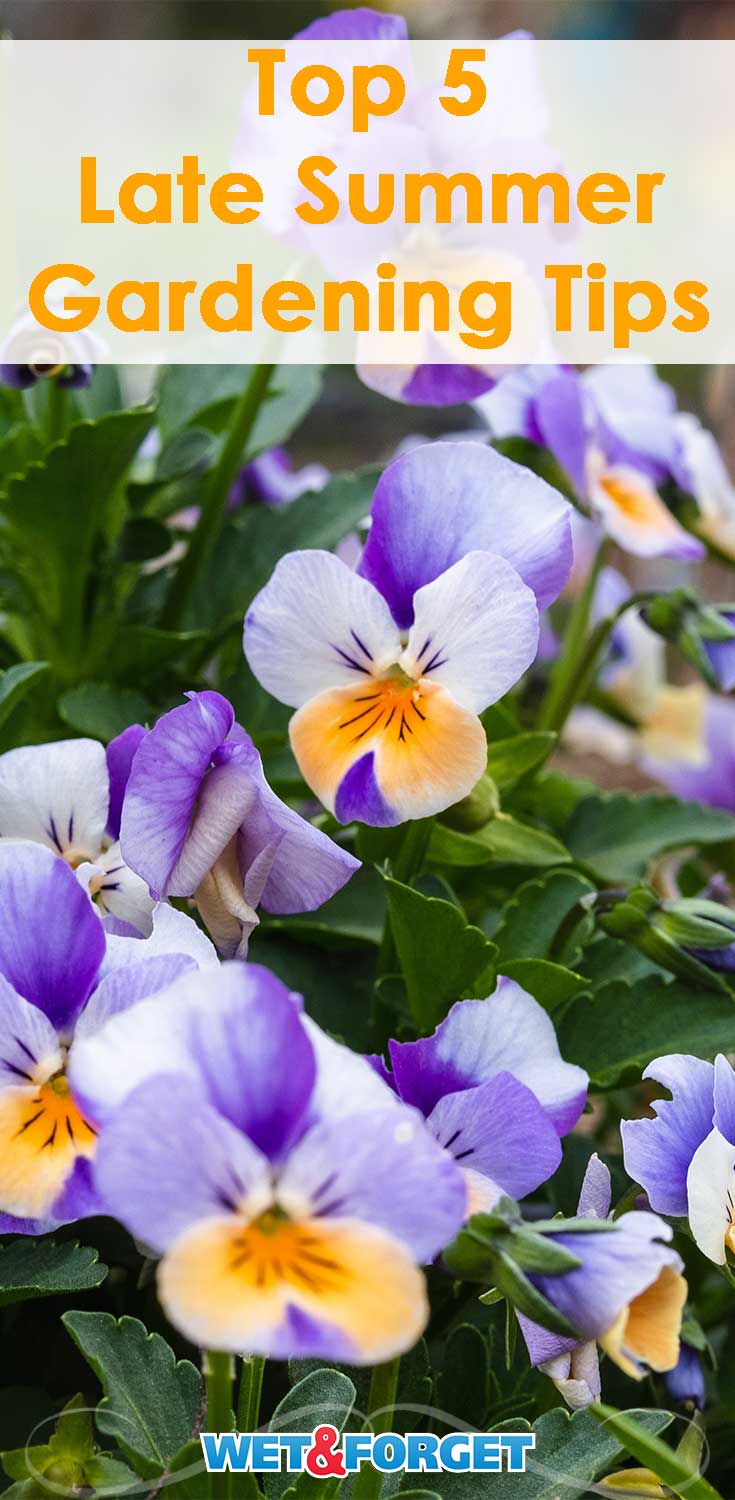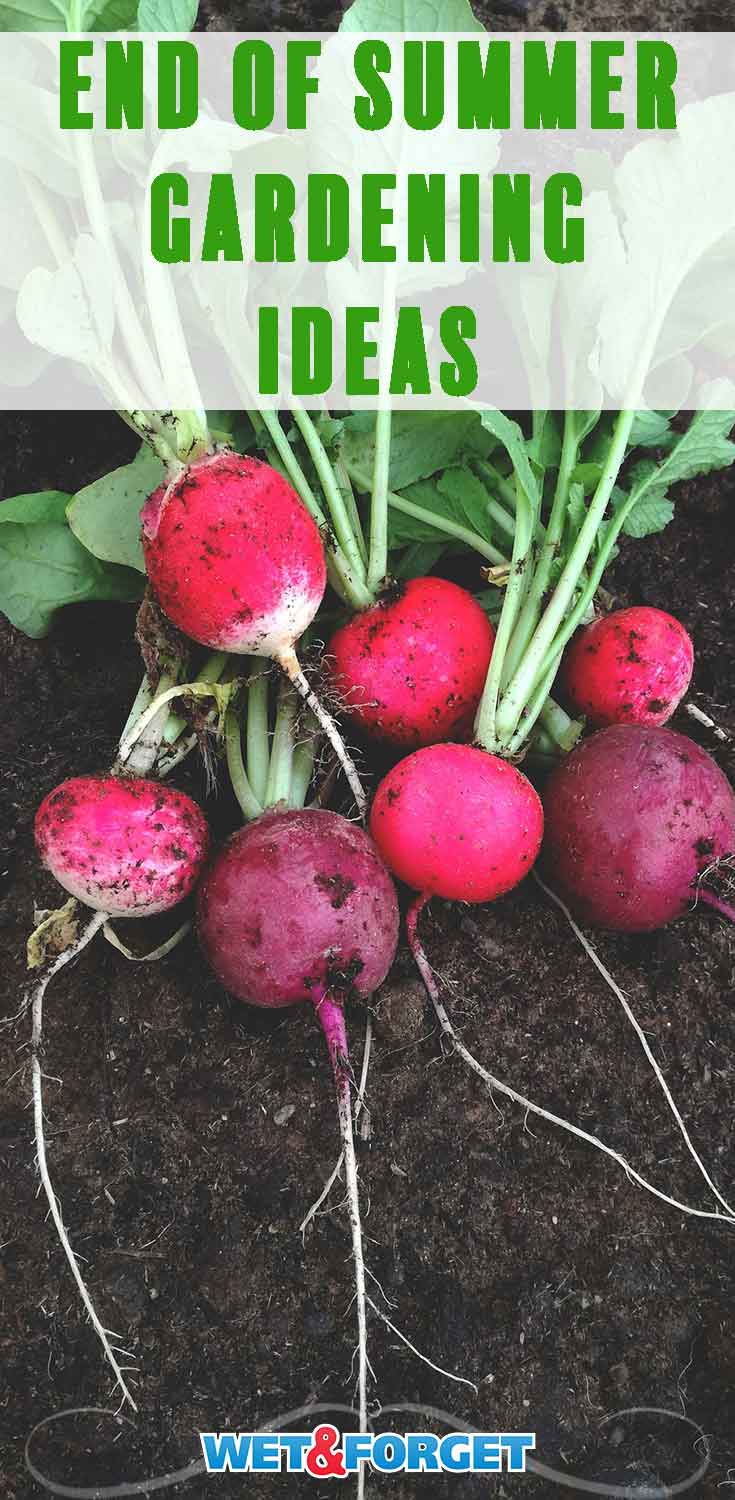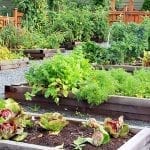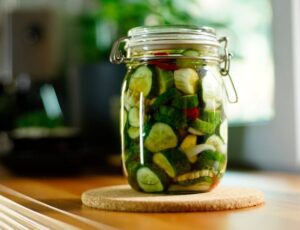
Late Summer Gardening Tips for the Home Gardener
In the days of late summer, August or September, your garden and yard may look a little worse for wear. Now’s the time to tidy up, clean up, and consider putting in some late summer vegetables or ornamental plants.
Read on for advice about the end of the summer gardening and landscape care.
Garden Makeover -Tips for Late Summer Season Annuals and Perennials
- Deadhead annuals and perennials of spent flowers. Any plants that are tall or leggy can be pinched back or pruned. Add a little fertilizer to annuals to have them bloom until frost.
- Continue weeding to ensure your garden’s annual and perennial plants receive the proper sun, nutrients, and water required. Applying mulch will help hold moisture in the soil and look attractive to the eye. This is also the last time of the year the sun will be out this long.
- If you have bare spots, fill them in with annuals that contain bright color. They do well in mild temperatures. Bright pansies, verbena, ornamental kales, cabbages, and garden herbs are excellent choices. Luckily, annuals are usually discounted at the end of summer. Check your local garden center or plant nursery for discounts.
- In northern climates, chrysanthemums have an autumn color that works as beautiful annuals. Plant them in August or September, just before the flowers open, and space them approximately 8-inches apart. In the south, mums are hardy perennials, returning each year. Trim fall-planted mums back after each time they bloom and mulch well.
Late Summer Shrub and Tree Trimming
Moving into late August and September, landscape greenery like trees and bushes may look overgrown and need pruning. No need to fertilize in late summer as this isn’t the best time to encourage growth for each plant to bloom within gardens.
Prune your shrubs and trees as needed and water them well with a drip or soaker hose. This is required particularly in the south, where the hot sun can quickly evaporate much-needed moisture. For more tips on fall pruning, click here.
Tidying the Late Summer Vegetable Garden
First, harvest any remaining vegetables or fruits from the gardens and prep them for freezing, canning, or eating. Learn how to preserve fruits and vegetables here.
Remove any dead or dying vegetable plants by pulling each plant by the roots from any gardens. Throw dead, spent plants and fallen leaves into the compost pile.
The cool fall weather will give annoying weeds a burst of energy, so it’s best to pull those now.
When your vegetable gardens are clear of plants, put down mulch and black plastic or plant a cover crop to hold moisture in the soil and keep weeds at bay.
Planting a Fall Vegetable Garden
If you’re lucky enough to live where you’ve got a few short months to plant again, now’s the time to plant these gardens. Most mild-season vegetables planted early spring can also grow in your fall garden.
Cool-season veggies will thrive in mild temperatures – most will tolerate a light frost in gardens.
Ideally, it’s best to begin planting for fall in July or August, around the summer solstice. This will allow plenty of time for cool-season plants to grow and mature before the first hard freeze.
To figure out when to plant, read the seed packet or search online to find the estimated number of days to maturity for your particular vegetable. Then, starting from the first average frost date, count back to determine what day to plant. Add in a few extra days to allow for harvest if you wish.
Here are a few fast-producing vegetables that work great for planting in fall gardens:
- Lettuce
- Green beans
- Arugula
- Spinach
- Mustard greens
- Green onions
- Radishes
If your tomato plants are winding down for the season, but you’ve got a few green ones on the vine, try this southern recipe –
Fried Green Tomatoes
Ingredients:
1/2 cup cornmeal
1/4 cup all-purpose flour
1 teaspoon sugar
1 teaspoon salt
1/4 teaspoon pepper
4 medium-size green tomatoes, cut into 1/3-inch slices
Vegetable oil
Mix cornmeal, flour, sugar, salt, and pepper in a bowl. Coat tomato slices in the cornmeal mixture. Fry tomato slices in 1/4 inch of hot oil in a large skillet. Be sure to fry the tomato slices until browned, turning once. Drain the tomato slices on paper towels. Serve immediately. Recipe courtesy of My Recipes.
















